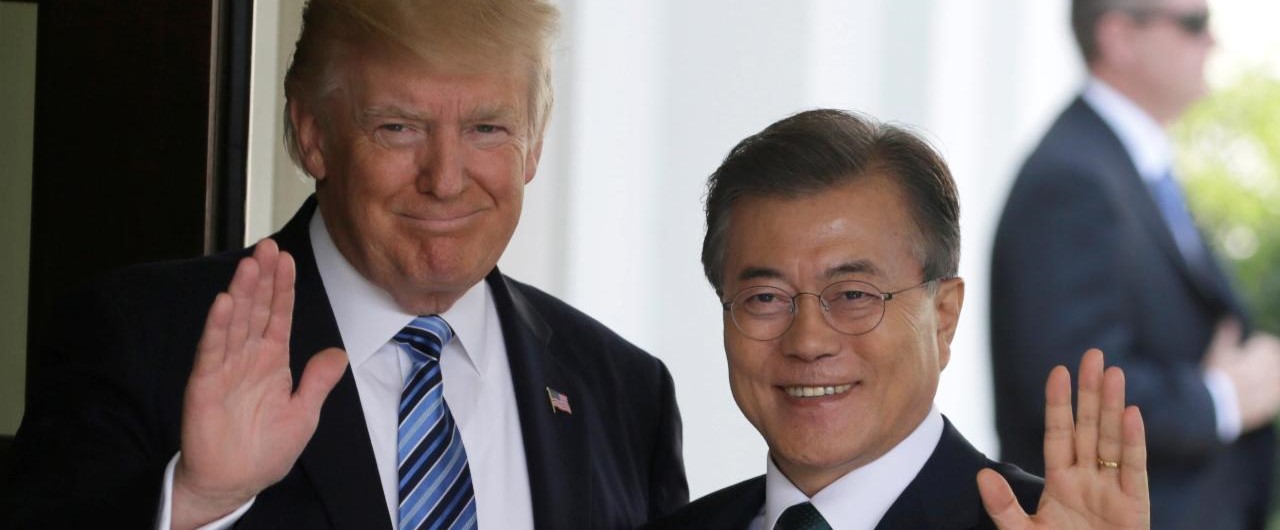Tensions between the two Koreas escalated again last month after a South Korean fisheries official, possibly attempting to defect, was shot dead by North Korean army troops after he swam across their disputed maritime border known as the Northern Limit Line.
A shocked President Moon Jae-in, who has made engagement with North Korea the centerpiece of his administration, demanded an explanation. Some US “experts” boldly predicted that North Korea had killed off Moon’s peace initiative.
Within days, however, the tables were turned. On September 25th, Kim made an unprecedented public apology to South Korea for the “unsavory” killing, which he admitted (rightly) had “delivered a big disappointment” to the people of the South.” Moon responded that Kim had reaffirmed “his hope that inter-Korean relations will not fall apart,” and his ruling Democratic Party proposed a joint investigation with Pyongyang (that has yet to happen).
Another crisis on the Korean peninsula had apparently been averted.
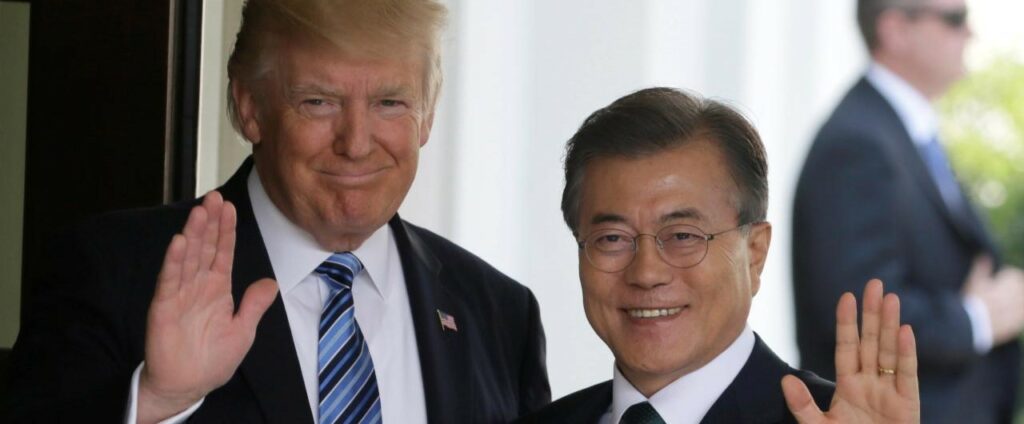
Why Spies?
Significantly, Kim’s apology was not sent through diplomatic channels but came from the United Front Department (UFD), an arm of the North Korean intelligence service that has historically overseen North-South relations and operations. The letter was transmitted to President Moon through Park Jie-Won, the newly appointed director of South Korea’s National Intelligence Service (NIS).
Those relationships, and South Korea’s alliance with the United States, will be seriously tested by the upcoming US election. Ever since the collapse of the US-DPRK talks in Hanoi in March 2019, the Moon government has been trying to convince Trump and the US national security establishment to be more flexible on the issue of sanctions so North and South can move ahead on inter-Korean economic projects they agreed to in 2018. That was the topic of recent meetings in Washington between Moon’s top nuclear envoy and the Trump administration. Another key issue is the US pressure on South Korea to join its anti-China alliance, which Moon has resisted.
With Joe Biden promising to work more closely with allies while being tougher on both North Korea and China, Seoul – and the NIS – face difficult choices in the months ahead.
Architects of ‘Sunshine’
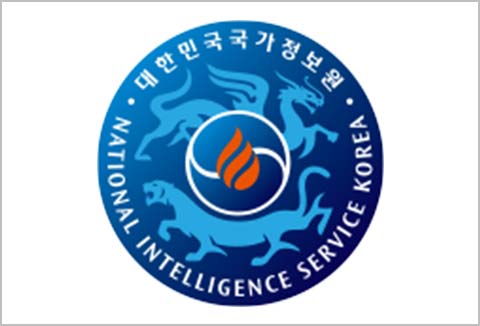
How the NIS – the successor to the KCIA, once one of the most feared spy agencies in the world – came to play a central role in the Korea peace process is a little-known story that explains much about South Korea today and its progressive leadership under President Moon.
At the same time, it reflects the precarious state of North-South relations since earlier this year, when Kim’s government cut off most communication with Seoul, blew up a joint liaison office just north of the DMZ, and sharply criticized Moon for being too dependent on the United States.
Since the failure of the Hanoi Summit in February 2019, President Trump has lost interest in the North Korea issue, leaving South Korea to strategize about how to keep the possibility of peace and reunification alive.
In July, Moon appointed Park Jie-won as NIS director as part of a shakeup of his national security team designed to get his stalled talks with the North back on track. Park is widely known as the architect of the “Sunshine Policy” towards the North initiated and championed by former President Kim Dae Jung. (Kim, who led the democratic opposition for many years was once kidnapped and nearly executed by the KCIA; in 1998 he was elected president.)
At the NIS, Park replaced Suh Hoon, a longtime NIS officer who is now Moon’s national security adviser. Suh, too, has been involved with inter-Korean affairs for many years. During the 1990s, Suh was a top official with the consortium organized by the US, South Korea and Japan to build a light-water reactor in the North as part of the 1994 “Agreed Framework” with Kim Jong Il. Signed by President Clinton, the agreement averted the first nuclear crisis.
According to NK News, Suh “has probably lived in North Korea longer than any other South Korean since the end of the Korean War.”
Getting Trump to the Table
Because of his many contacts with the North, Suh was pivotal to President Moon’s peace overture in 2018. That initiative began during the Winter Olympics, when the new president invited North Korea to participate in the games and Kim Jong Un sent the highest-level delegation from Pyongyang ever to cross the DMZ into the South.
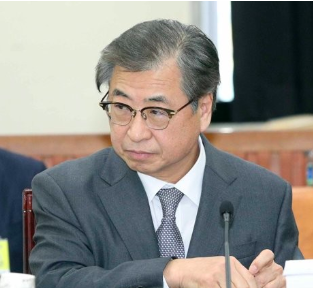
A few weeks later, Suh and Chung Eui-yong, then Moon’s national security adviser, met secretly in Pyongyang with Kim, who communicated to them his willingness to meet with Trump as a way to defuse tensions over their confrontation over North Korea’s nuclear and missile tests.
Not long after, Suh and Chung flew to Washington, where they passed Kim’s request to Trump at the White House. In the months leading up to the Trump-Kim summit in Singapore, Suh and the NIS, along with Andrew Kim, then the director of the CIA’s Korea Mission Center, remained in close touch with North Korea’s intelligence officials.
When Kim sent a representative to Washington to pave the way for Singapore, it was Kim Yong Chol, the former head of the UFD known (and feared) for directing North Korea’s top spy agency, the Reconnaissance General Bureau.
Once these discussions got into the realm of establishing a formal end to the war and building a peace process, the spies stepped back and the diplomats took over.
As I reported in The Nation in 2018, that process was just beginning in the wake of Singapore. And after the US-DPRK talks collapsed in Hanoi in 2019, it was back to the spies. Suh went to Pyongyang to discuss how to get the process back on track.
CIA vs. NIS
Yet, even as the NIS works in tandem with the CIA, their goals are very different. US intelligence views North Korea only in adversarial terms. During Trump’s talks with Kim, the agency has consistently argued that the DPRK is “unlikely” to give up its nuclear arsenal. For the NIS, however, the purpose of dialogue and engagement is to reconcile and fulfill the national goal of eventual unification with the North.
The difference between the NIS and the CIA is not just one of policy but of the very conception of the North Korean issue.
One of the clearest explanations of the South Korean perspective comes from Lim Dong-won, a former NIS director-general and Minister of Unification. He played key roles in the 2000 and 2007 summits with Kim Jong Il, and has consistently described his goals as an intelligence chief as ending “the legacy of the Cold War on the Korean Peninsula.”
In a 2012 speech at Stanford University based on his memoir, Peacemaker, Lim described South Korea’s engagement with North Korea as an effort to “establish a new relationship of reconciliation and cooperation” aimed at “removing the hostile relationship between North Korea and the United States.” Now 86 and still advising President Moon, Lim is highly critical of the unilateral demands for immediate denuclearization made by the US government in its talks with the North.
“A comprehensive, step-by-step approach is essential,” he said in a speech last July. That is the same gradualist approach that Kim Jong Un has embraced and is seen by many peace advocates as the only way forward in Korea. He added: “South and North need to cooperate as parties to peace on the Korean Peninsula” and “transitioning from a military armistice system to a peace regime.”
Some Korean analysts now credit Lim and the NIS for convincing the Clinton administration to launch the remarkable negotiations with Kim Jong Il in 1999 that nearly succeeded in ending the enmity between the US and the DPRK in 2000 (those talks, which began while the Agreed Framework was still in effect, were abruptly cancelled by President George W. Bush in 2001).
Back Ki-chul, the executive editor of the progressive Hankyoreh newspaper, recently wrote that Lim’s most important contribution to inter-Korean ties may have been the concept of “open autonomy” first adopted by Kim Dae Jung. This approach, he said, was designed to “create an independent space for inter-Korean negotiation and compromise and to seek the support of the US and other related countries, without relying solely on the US.”
He urged President Moon to adopt Lim’s strategy. “South and North Korea need to reconsider their dependence on Trump, who doesn’t have the slightest interest in peace on the Korean Peninsula,” he wrote.
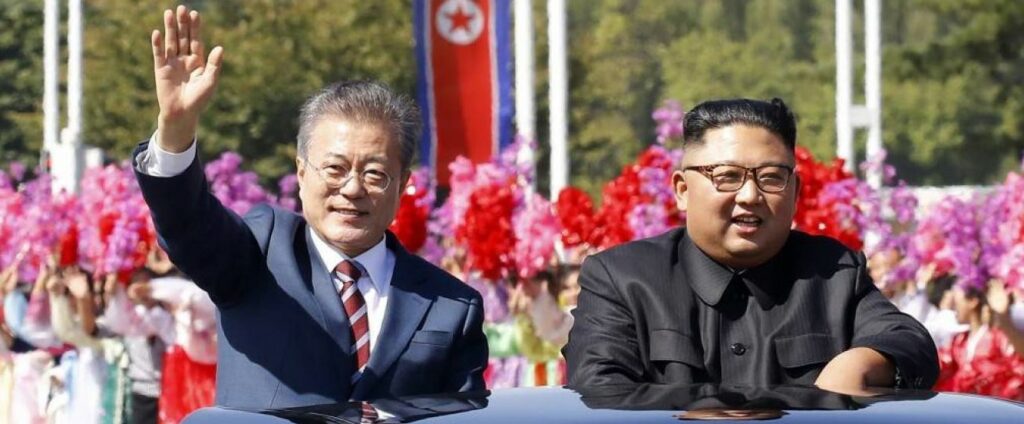
Politics of Intelligence
South Korea’s reliance on its intelligence services might appear unusual in a world where diplomacy is the defining method of settling disputes. But it’s a natural outgrowth of Korea’s history as a divided country in which each half claims jurisdiction over the other.
The secrecy, however, has sometimes backfired. After the 2000 summit, Park Jie Won was jailed for three years for funneling $450 million from the giant Hyundai Group to the North ahead of the meetings. And in 2006, Lim Dong-won was convicted for illegal wiretapping during the Kim Dae Jung administration.
More recently, the NIS admitted to conducting an illegal campaign to promote the election of conservative Park Guen-hye in 2012 when she defeated Moon Jae-in. Park, who was impeached in 2017, was later convicted of accepting nearly $27 million in bribes from the NIS during her time in office.
Such abuses have prompted the National Assembly to consider sweeping reforms to the NIS that would weaken its domestic investigatory powers and restrict its role to spying overseas.
Bloody KCIA
The Korean Central Intelligence Agency (KCIA) was founded by former President Park Chung Hee in 1961 “with the advice and assistance of the American CIA.” Park was a general who took over in a military coup in 1961, when he crushed a brief movement for reunification with the North that swept the country after its first democratic revolution in 1960 (Park Guen-hye, now in prison, is his daughter).
In 1972, Lee Hu Rak, Park’s intelligence chief, stunned the country by meeting secretly with Kim Il Sung, North Korea’s founding leader, and setting up the first meetings between the ROK and the DPRK since the end of the Korean War. A few months later, Park expanded martial law and instructed the KCIA to launch a massive crackdown on dissent to ensure national “unity” as he negotiated with Kim.
Over the next seven years, Park’s repression and torture state worsened, leading to an explosion of protests in the fall of 1979 (the KCIA’s “room of death” at its headquarters in downtown Seoul is now a museum). That October, in the midst of the largest demonstrations since 1960, Park was shot to death at a dinner party by Kim Jae-gyu, one of Lee’s successors at the KCIA (Kim, who claimed that he acted to save Korean democracy, had close ties to the CIA, but that’s another story).
Six months later, another general, Chun Doo Hwan, seized power after taking personal control of the military and the KCIA. But he, too, was toppled in 1987 by nationwide protests that led, finally, to democratization. As South Korea came to terms with its authoritarian past, the KCIA was reorganized and reformed as the NIS, and its repressive powers were gradually – but not completely – diminished. Yet its influence remained pervasive, especially as a conduit for discussions with the DPRK.
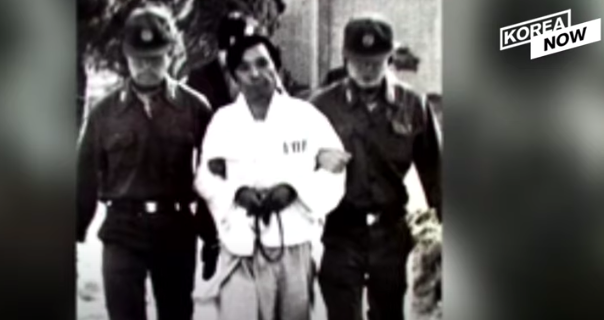
Beyond Trump
Why intelligence officials and not diplomats lead the talks has to do with factors related to the 1953 armistice. While the shooting stopped the North and South have lived in a technical state of war ever since. Moon Chung-in, President Moon’s adviser, has defined the inter-Korean process since South Korea’s democratization in the 1980s as “unconventional summit diplomacy that grew out of the “inconclusive” ending of the war.
In a fascinating 2018 article in The Brown Journal of World Affairs, Moon explained that both North and South consider themselves the legitimate rulers of all of Korea. But since they signed a “basic agreement” on reconciliation in 1992 – which was negotiated by former NIS Director-General Lim Dong Won – they have defined their on and off discussions as “temporary transitional special relations” of two countries “striving towards unification.”
According to this compromise, Moon Chung-in explained,“relations between the two Koreas are not interstate relations, but intra-national special relations of a kind that have prevented the adoption of formal diplomatic intercourse.”
Thus the use of intelligence officials, who can speak and negotiate with the direct support of their leaders but aren’t beholden to the rules of state-to-state diplomacy.
With Park Jie-won, the new NIS director, leading the interactions with Kim Jong Un, Korean intelligence is once again in the lead. According to Hankyoreh, his appointment was “a message that signals a strong commitment to improving inter-Korean relations while urging the US government to adopt a more forward-looking stance.”
The importance of his initiative was underscored this week after Trump was sidelined with a serious case of coronavirus and Secretary of State Mike Pompeo cancelled a visit to Seoul to discuss North Korea policy.
Still, no matter who the next US president turns out to be, Moon will continue his quest for a peaceful solution to the nuclear crises that have plagued US-Korean relations for over two decades. It’s clear from his recent moves on the international stage that South Korea, thanks in part to the NIS, will be steering its own course. For once, Seoul’s tainted intelligence services may be on the right side of Korean history.
—————
Tim Shorrock is a Washington-based journalist who was partly raised in South Korea. He has been writing about the Korean Peninsula since the late 1970s and is the author of Spies for Hire: The Secret World of Intelligence Outsourcing.


